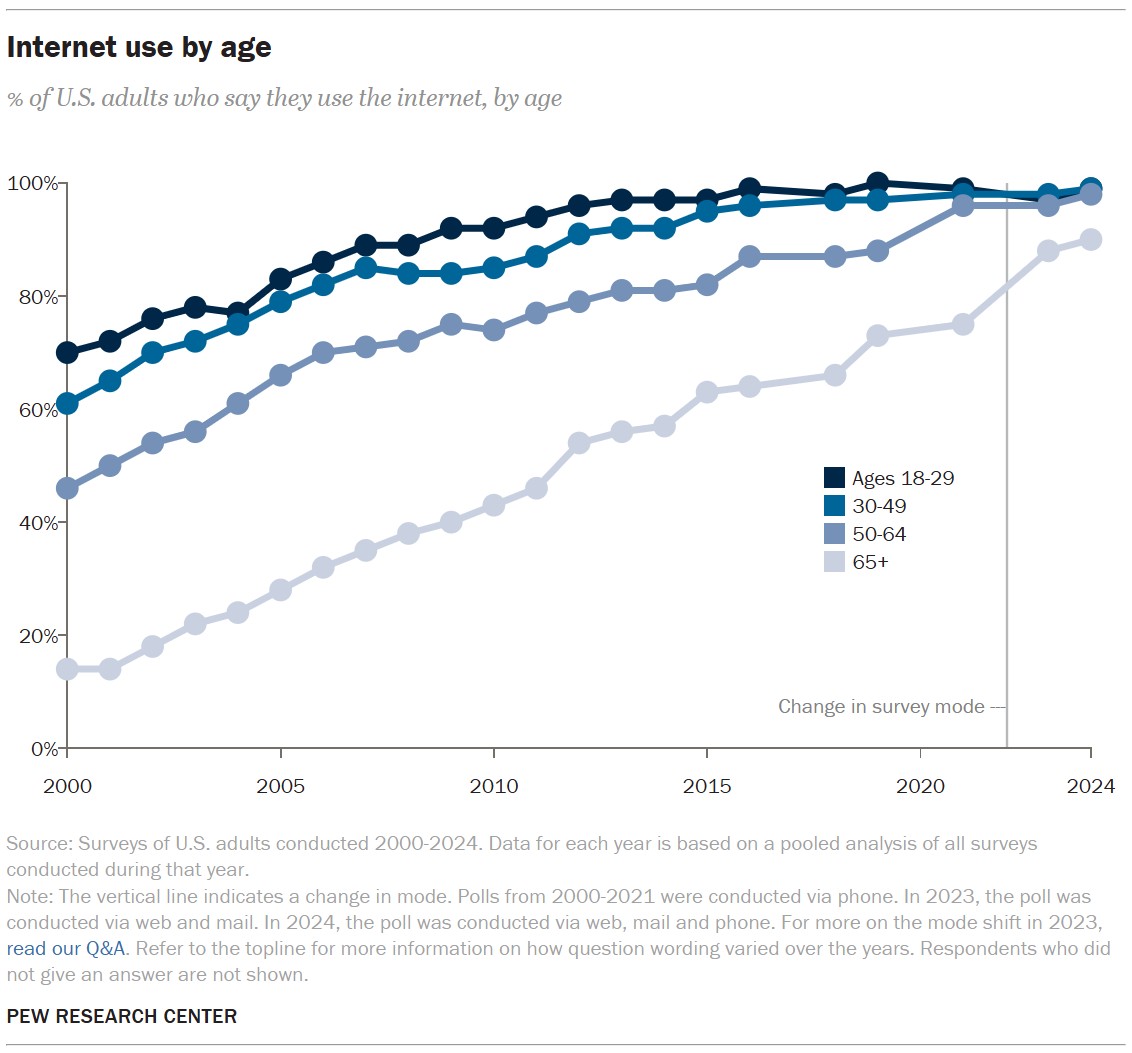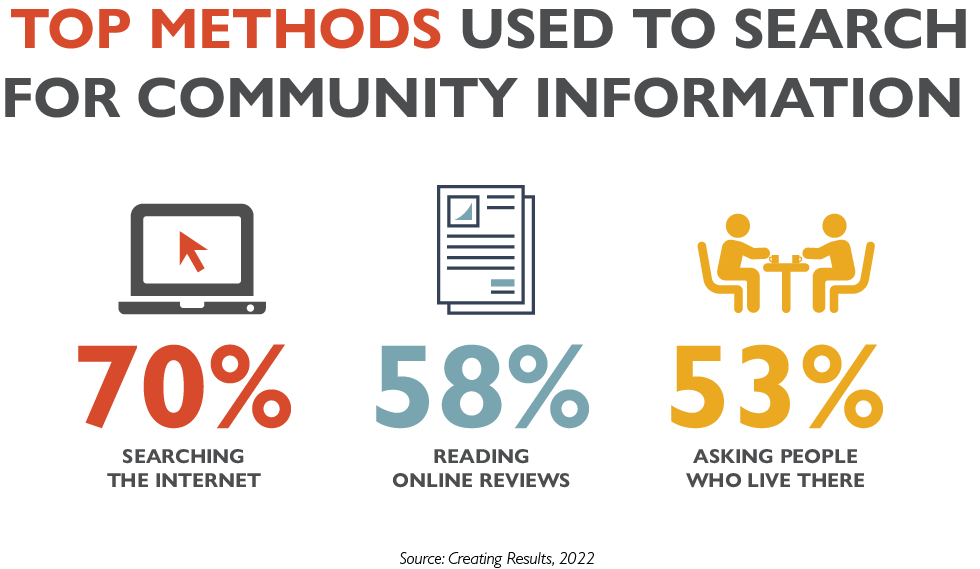Trying to reach baby boomers and seniors online? What do seniors do online? Here’s the latest look at how 50+ adults use the internet — and how you can use this data to improve your marketing strategies. Seniors do a lot online — from staying connected with friends and family and shopping to banking and personal hobbies, and much more!
1. Internet usage among seniors
In a 2024 survey, Pew Research Center found that 90% of adults ages 65+ are online, compared with 98% of those ages 50–64. Over the past 5 years, seniors have significantly closed the gap with younger generations, perhaps driven by need during the pandemic.
What’s more, 91% of older adults now own a smartphone, according to AARP’s 2025 Tech Trends report. Interestingly, the organization also found that Android use (47%) is outpacing Apple devices (43%) among those 50+.

THE BOTTOM LINE: Digital strategies are a must. Past research has shown that the 80+ segment within the 65+ cohort tends to bring down the overall average — meaning that isolating those ages 65–74 would likely result in an even higher overall percentage.
2. How do seniors use the internet in 2025?
Most online seniors are enthusiasts who own an average of 7 tech devices, says AARP, including smartphones, tablets and smart TVs — and ownership of these devices continues its year-over-year trend upward. What are seniors doing once they get online? Browsing the internet, communicating with others, shopping and navigating to where they need to go were among the top responses.
Activities seniors did online in the past 3 months via a website or a mobile app
Top 20 digital services used among adults age 50+
%
Average number of digital services used
- Internet browsing 81%
- Communication 80%
- Retail/shopping 79%
- Maps and navigation 76%
- Weather 76%
- Social Media 74%
- Photos 73%
- Finance and banking 65%
- Music 52%
- News and magazines 51%
- Games 50%
- Calendar 50%
- Video chat 45%
- Travel 35%
- Medical 35%
- Personal hobbies 34%
- Reviews/information 32%
- Sports 30%
Video streaming remains the most popular paid app among this age group. In Creating Results’ independent research, we found that 88% of those ages 55+ use YouTube on a weekly basis. Don’t get caught in the mindset that online videos and social media only appeal to Millennials and gen Z!
Speaking of social media, nearly half of seniors spend over an hour on social media every day. In addition to YouTube, Facebook remains popular among the senior audience, with 59–72% of adults 50+ using the platform, depending on the data source. (Pew Research puts the percentage lowest at 59%, while AARP’s survey during a similar period reports 72%.) No matter the exact percentage, both YouTube and Facebook are strong platforms for marketers to utilize in their marketing plans.
Instagram usage is also up significantly year-over-year among those 50+, with 33% reporting use. Around 1 in 5 older adults report using WhatsApp, Pinterest and LinkedIn as well. Newcomers Threads and Truth Social have only a tiny market share among this audience (3% and 4% respectively).
Newcomers Threads and Truth Social have only a tiny market share among this audience (3% and 4% respectively).
THE BOTTOM LINE: Ensure your social media strategy aims to enhance seniors’ online experience with posts that inspire, educate and showcase your community’s lifestyle — not just sell.
3. How do seniors look for information about a community?
When it comes to searching for information about a 55+ or senior living community, seniors are likely to turn to the internet first.

For marketers, this information means that it’s vital to understand how your digital properties fare from an SEO perspective (read: does your community come up when seniors search common terms, like “senior housing near me”?) as well as how accurately online reviews reflect your community’s brand and messaging and what other information about your community is out there when someone searches your name.
THE BOTTOM LINE: A strategy for managing your community’s online reputation has never been more important. You won’t have an opportunity to change someone’s mind if they’re turned off by negative reviews and never become a lead in the first place.
Key marketing takeaways for 2025:
- Ensure you’re understanding your audience with the latest consumer insights data rather than stereotypes or outdated information. Seniors are online!
- Spend your time and money where your 50+ prospects spend theirs. Facebook and YouTube are among the top digital tactics to consider.
- Prioritize the segment of your audience most likely to convert — we can help.
The prevailing attitude of older adults is that the web is a useful tool. They’re ready to engage online — are you?



